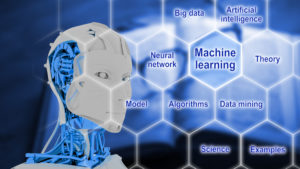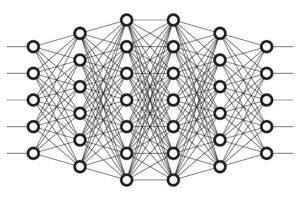Artificial intelligence (AI) is redefining life as we know it. From virtual agents that can predict consumer needs and preferences to offering hyper-personalized recommendations that adapt in real-time, everyone is talking about it and seeking ways to integrate AI into their products and business systems. But for many, the concept of AI remains shrouded in mystery. What can it really do for your business? How can AI benefit your organization, and more importantly, how do you navigate its complexities without getting lost in the tech jargon?
Let’s start with the basics.
AI is the simulation of human intelligence by machines. But before you begin picturing Skynet or Ultron, I want to be clear: AI today isn’t here to create superhuman technology. It exists to help businesses process massive amounts of data, make predictions and automate tasks. AI is a tool for efficiency not world domination.
AI vs. Machine Learning: What’s the Difference?
The terms “AI” and “machine learning” are often used interchangeably but there’s an important distinction. AI is the broader field, aiming to mimic human capabilities, such as problem-solving or decision-making. Machine learning (ML) is a subset of AI that focuses on teaching machines how to learn from data without explicit programming.
Think of machine learning as statistics on steroids. It uses mathematical algorithms to analyze patterns, adapt to new data and make decisions. The true magic happens when these models gain knowledge from historical data and can predict future trends without a human coding every instruction.
AI’s transformative power lies in its ability to learn from massive datasets and generalize its training to make predictions. But what makes this possible?
Enter Neural Networks and Large Language Models
Neural networks and large language models (LLMs) are the intelligence behind many of the advanced AI systems you’ve heard of.
Neural networks are a type of machine learning inspired by the human brain. They consist of layers of interconnected nodes loosely modeled on neurons in our brains that process information. In practice, they’re used to recognize patterns like identifying a face in a photo or detecting fraud in financial transactions.
LLMs are a specialized type of neural network that are focused on predicting tokens (words) in a sequence. These networks are trained by adjusting the “weights” between connections, similar to how the brain strengthens neural pathways through learning. Like the brain, LLMs are trained on vast amounts of data, allowing them to generate conversational, human-like language.
LLMs operate like the human brain and are capable of using the full context of a statement to interpret meaning. The brain utilizes past experiences and linguistic context to understand language, while LLMs use data to make sense of language patterns and adjust predictions based on the surrounding text.
When you ask a generative AI system like ChatGPTor Anthropic Claude a question, it predicts the next word based on context, one word at a time, thus creating a coherent response. LLMs anticipate the next word or “token” in a sequence, but they do this so well that it feels like you’re talking to an actual person. LLMs have billions, and often trillions, of parameters (connections between neurons) enabling them to generate natural language responses, translate languages, summarize information and even create stories.
While this may sound complex, it’s all rooted in probability and mathematics.
Real-World AI: Practical, Not Science Fiction
Here’s why AI truly shines for businesses. Beyond the flash and hype, this advanced technology can deliver real results and is making the impossible possible. By integrating AI into routine workflows, businesses can unlock tangible value and boost their return on investment. AI-powered tools can automate repetitive tasks like summarizing conversations or checking orders to free up time and resources. Similarly, AI copilots can operate as employees’ personal tech sidekick, helping them to be sharper and faster on the job. AI’s impact transcends convenience extending support to employees so they can be more effective with less effort.
LLM-driven solutions like virtual agents allow businesses to orchestrate more connected experiences with their powerful abilities to understand complex conversations and ensure context and history always follows consumers. This minimizes frustration, removes the need for customers to repeat information and enables agents to focus on customer intent to deliver more highly personalized experiences.
Ethics and Trust: The AI Frontier
Of course, no discussion about AI would be complete without addressing trust and ethics. AI holds tremendous potential, but it also raises important questions: Can we trust AI with sensitive data and how do we prevent bias in AI models?
AI systems can sometimes “hallucinate” or produce incorrect information. To prevent this, AI systems should be fine-tuned with data sets appropriate to the use case to reduce hallucinations. When agents review AI outputs, organizations can refine their systems using real-world interactions tailored to their industry. Capturing when agents edit AI responses creates a feedback loop that sharpens model accuracy and significantly reduces hallucinations.
We believe more advanced AI technologies like virtual agents will soon dominate the digital landscape. To future proof their CX, companies should adopt Retrieval Augmented Generation (RAG) and agentic frameworks that embrace constitutional AI. This helps ensure AI interactions align with a company’s brand voice and deliver accurate and trustworthy information to customers.
Building responsible AI means designing, developing and deploying systems that align with ethical values to protect sensitive customer data. Responsible AI follows strict rules that safeguard businesses and consumers by upholding data standards, protecting personally identifiable information (PII) and understanding potential for bias. These privacy principles should be baked in to the research and development process to guard PII and ensure bias in data sets does not impact outcomes for the people who use these AI systems.
AI should also be transparent and easy to understand. You should know how algorithms work to stay in control of the outcomes. Publishing data cards, model cards and AI system cards are all steps organizations can take to show transparency about how data is used in model training.
AI is evolving at breakneck speed, and companies should already be considering emerging regulations like the European Union’s Digital Operational Resilience Act (DORA) Act and the AI Act. These laws aren’t just boxes to check—they’re signaling a global shift toward accountable and ethical AI practices.
Winning with AI
So, how do you win with AI? It starts with understanding where AI can be applied in your business to drive value. Look for repetitive tasks that can be automated, customer interactions that can be optimized and insights hidden in your data that can be uncovered. But don’t stop there. The key to success is collaboration. AI should augment human work, not supplant it.
Also, be mindful of the quality of your data. AI is only as good as the data it’s trained on. If your data is inaccurate, incomplete, or biased, your AI solutions will be too. Invest in building clean data pipelines and robust data management practices.
Lastly, stay informed. AI is evolving quickly and it’s critical to stay on top of trends, regulations, and ethical considerations. Keep asking questions, and make sure your AI providers are giving you the transparency you need to trust their solutions.
About the author: Joe Smyth is Senior Vice President of R&D, Digital, AI & Journey Management at Genesys. He leads a team of AI practitioners and is Site Lead for Genesys Ireland. Joe held senior management positions at Nortel and Cisco before co-founding Altocloud, a Galway based AI startup in 2013. Altocloud was acquired by Genesys in 2018.
leads a team of AI practitioners and is Site Lead for Genesys Ireland. Joe held senior management positions at Nortel and Cisco before co-founding Altocloud, a Galway based AI startup in 2013. Altocloud was acquired by Genesys in 2018.
Related Items:
Three Data Challenges Leaders Need To Overcome to Successfully Implement AI
Machine Learning, Deep Learning, and AI: What’s the Difference?
The post Demystifying AI: What Every Business Leader Needs to Know appeared first on BigDATAwire.



0 Commentaires